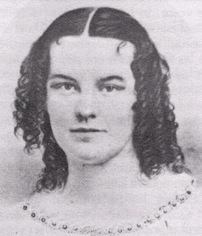
Rebecca Harding Davis: "Life in the Iron Mills"

Rebecca Harding Davis (1863 - 1910) was a social activist, particularly on issues of race: She was adamantly opposed to slavery and objected to the church's sanction (explicit or tacit) of the Civil War. She saw the conditions in mills (low pay, inhumane conditions) as abusive. Her 1861 publication of “Life in the Iron Mills” (in the Atlantic Monthly) was the start of her fifty-year career which would produce a corpus of 500 published works. Following the 2006 tragedy at the Sago Mine in West Virginia, where 13 miners were trapped (and 12 of them died), The Atlantic Monthly offered a retrospective article on Davis' story.
In her introduction to A Rebecca Harding Davis Reader: "Life in the Iron-mills," Selected Fiction & Essays, Jean Pfaelzer explains the extensive literary career of Rebecca Harding Davis. “Rebecca Harding Davis wrote from 1860 to 1910. During this long career, she produced over 275 stories, 12 novels (most published serially), 125 juvenile stories, over 200 identifiable essays, and perhaps an equal number of unsigned essays. Her work was published in journals such as the Atlantic Monthly, Harper’s New Monthly, Scribner’s Monthly, the Independent, the Saturday Evening Post, as well as in more widely circulated magazines such as Lippincott’s and Peterson’s” (xv).
Today we should talk about this story as just one in Davis's much larger career, and the role of fiction in magazines and newspapers at this time period, as well as the rise of literary Realism.
I'd also like to talk about the important issues surrounding industrialization. While they’re not iron mills specifically, the textile mills of Lowell are contemporary with Davis’s story, and the backdrop of American Industrialization is relevant to both. Part of understanding Davis' story is to consider how industrialization changed day-to-day lives of men and women of this period. To do this, we need to consider how these mills worked: their investors, architecture, working conditions, workers, and ultimately, the rise and fall of these systems.
By the end of the 19th century, Wheeling West Virginia, the setting of Davis’s story, became known as the “nail capital of the world,” and was the richest city per capita in America. Around the same time, Lowell Massachusetts became America’s largest textile center; by 1850, its mills employed 10,000 people. Today, both cities are overshadowed by their mill histories and the physical presence of the mills themselves. By exploring this physical history, I hope you will develop a greater understanding not just of the history of workers and the Industrial Revolution during Davis’s time, but how that time period casts its shadow onto contemporary conditions to this day.
Take a moment to go through this brief slide show I put together: IronMillsPresentationMarshall.pps
It highlights the connections between Wheeling, West Virginia and Lowell, Massachusetts.
As we head into a discussion of the text of the story, here are some questions to think about:
1. What about the title? Davis originally wanted to title it "Beyond," or "The Korl Woman." Her editor at the Atlantic Monthly rejected these titles. What would these titles have suggested or achieved? How well does this title work?
2. Find passages where we hear from the narrator (“I”). What’s the narrator’s position? Who is he/she? How is he/she connected to the story he/she tells? How does he/she know some of these details? [suggested pages: 1221 – 1223; top of 1237
3. The narrator repeatedly refers to “you,” the reader. Find some passages where this happens. What are the narrator’s assumptions about “you”? What is the effect of this direct address of the reader?[suggested pages: 1222-1223; 1226; bottom of 1237]
4. Find descriptions of Hugh and Deb (and Janey, if you like). What do they look like, what do they do, how do they talk? What is their relationship? [suggested pages: 1223, 1224, 1226-1227 and 1242 - 1243]
5. Look at the descriptions of the sculpture of the woman made from korl (waste product of the mills). How is it described? What details are important? How do different characters describe it? What symbolism might be involved here? [See 1230 for first appearance, and 1230 - 1232; also 1246]
6. Several men meet Hugh at the mill; among them are Kirby (the overseer and son of a mill owner), Doctor May, and Mitchell (Kirby’s brother-in-law). What position(s) do each of these three men take towards Hugh? What do they say to him? [suggested pages: 1231 - 1234; also Dr. May & wife again 1239 - 1240]
7. What has happened to Hugh and to Deb at the end of the story? [See pages 1242 - 1244 especially for Hugh, and 1245 - 1246 for Deb.] Did you expect these outcomes for these characters? What do these endings suggest?
8. What do you make of the final two paragraphs where the narrator returns? [Page 1246]. Why is this here? How does it help the ending? What additional insight does this give us into the narrator (I) and the "you" from the earlier part of the story?